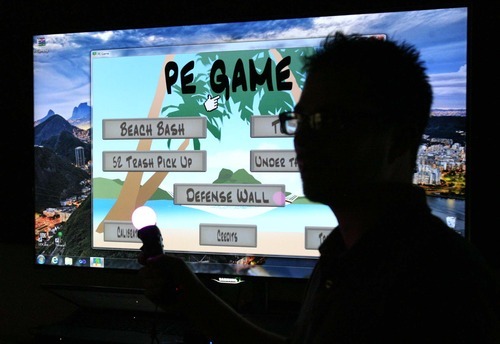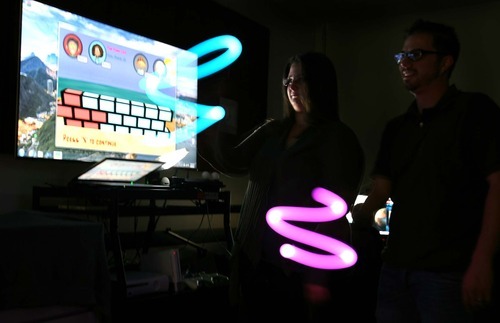This is an archived article that was published on sltrib.com in 2011, and information in the article may be outdated. It is provided only for personal research purposes and may not be reprinted.
Kids battle monsters, aliens and zombies in video games, so why not diseases?
Doctors and students in video game design at the University of Utah have devised a game that helps young cancer patients raise their spirits and fight the disease with empowerment, a positive attitude and the waggle of a gaming controller.
"It's not just for fun but it has a huge role in diversion, stress release, working through emotions," said Carol Bruggers, a U. professor of pediatric hematology/oncology, who helped design the game. "Play has a huge, complex role in dealing with stress in child development."
In 2007, about 10,400 children younger than 15 were diagnosed with cancer, of which about 1,545 children will die of the disease, according to the latest statistics from the National Cancer Institute.
The game, which doesn't have a name yet, is a series of five mini-games that uses the Sony PlayStation 3's Move controller, a wand similar to the Nintendo Wii that players swing in front of a small camera. The camera registers the player's moves and translates that movement to the TV screen.
Each game deals with the superhero Vance B. Strong as he battles an evil robot crab that represents cancer. As Vance battles the crab in a series of mini-games, he gets stronger while the crab gets weaker.
In one game similar to "Whack-a-Mole," the player uses the controller like a mallet to hit mechanical crabs. In another, the player swings a beached whale back into the ocean. In a third, the player uses the controller to build a brick wall that is a metaphor for a person's immune system.
Each of the games uses a different hand motion, and after the player completes one, a timer prevents them from returning to the game for a period of time so they don't suffer repetitive-motion injuries. A physical therapist as well as oncology counselors from Primary Children's Medical Center helped design the games, Bruggers said.
Five graduate students from the university's new Entertainment Arts & Engineering Masters Game Studio department then developed a prototype over the summer. The department was recently named one of the best video game schools in the country.
"We're happy with the results," said the game's executive producer, Roger Altizer. "We didn't think we would be this far."
The idea for the game came to Grzegorz Bulaj, a U. associate professor of medicinal chemistry, about a year ago when he met with a boy suffering from a brain tumor.
"Meeting him, learning about him and his very upbeat spirit and his dedication to fight the brain tumor was very extraordinary for me," he said. "It was an important piece of the story."
Then last spring, Bulaj encountered a medical device called an "incentive spirometer," a clear tube with a ball inside that measures the strength of a patient's exhale to help encourage stronger breathing. That gave him the idea that if you can visualize trying to achieve a goal, it will make you more motivated to achieve that goal.
"The key aspect of this invention was realizing that visualization of breathing helps patients to breathe," Bulaj said. "If the patient visualizes their disease being defeated, it should help them to uplift their spirit."
Plus, the patient gets needed exercise playing the game, he said.
"The physical exercise has been shown to help improve the therapeutic outcome of the patients," he said. "It provides benefits for the immune system and stamina and overall well-being and quality of life."
Currently, the game is just a "proof of concept," and only a few children have tested it (one unit is in the pediatric cancer ward at Primary Children's).
But Altizer hopes their experiment can be developed into a full-fledged retail game that can be built for other gaming consoles including for Microsoft's Xbox 360 Kinect system, which also uses motion control. Already, other companies, including Sony and Microsoft, as well as other university departments are interested in their project.
"We'd like to see more diseases represented in the game and have more mini-games," he said. "We're really happy we're making a fun game that has a noble goal."
Twitter: @ohmytech
Google+: +Vincent Horiuchi







